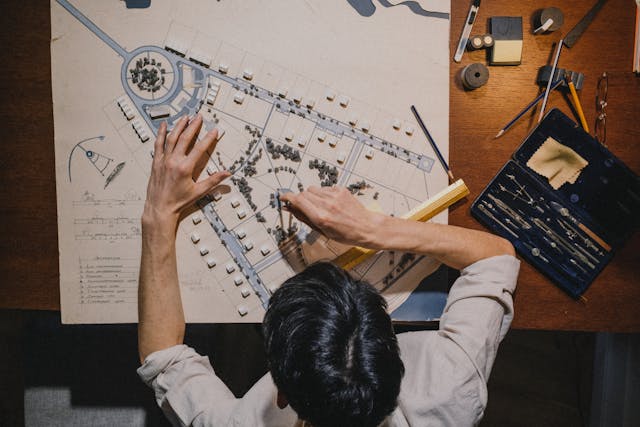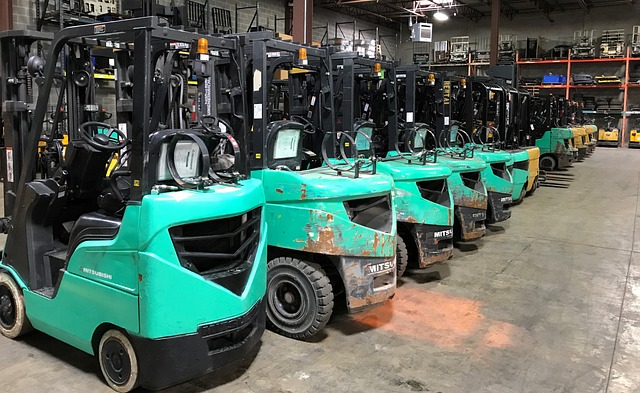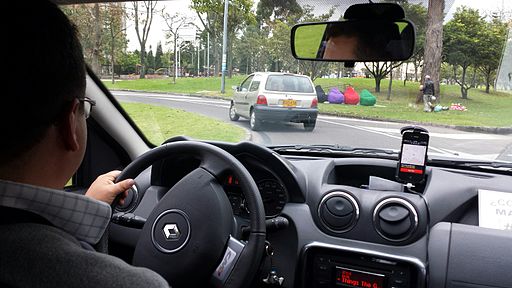More
Why No One Asks Men How They Balance Fatherhood and Work
Published
5 years agoon


When you think about it, this might not be the worst question in the world after all! How do you do it? Can you really balance family life and your career? People are generally curious about soothing their pain of underachievement and commiserating with their co- superhuman parents who manage to do it all. It’s like once we have examples in flesh, it becomes easier to keep hoping that well-adjustment and balance are possible.
So why is this question mostly interpreted as a roll-your-eyes-pain-in-the-ass one? The problem is that not both gendered parents are being asked. And not all people who are asking this question seem to have good intentions hidden behind it. There is some sort of doubt and shade in that question that is devastating career women. It’s thrown out there as a rhetorical statement, like ‘I know you can’t, but I am still asking you just for the sake of it all.’ If women are out there delivering a public speech on their achievements, along with their male co-worker who shares all the same marital attributes, is also a father of 3 kids, she will be the only one asked from journalists on how she finds the time to provide decent child care and be work efficient.
This story is going on for ages, as apparently there is a need to signify and highlight the status of working mothers. You don’t ever encounter the term working-father somewhere in the headlines, for instance. Rarely do you find pages that have part-time jobs for dads as their top-search category, as that is simply not a sacrifice necessarily expected from fathers, although it is one they often do. Fathers are becoming more and more present in their children’s lives because they feel like their need for a present father figure is just as necessary as the need for a mother figure.
So why is society only talking and victimizing women who work?
Is it because mothers who work tend to talk more about their struggles out of frustration on the stigmatization they suffer from society? Or simply because of general (miss) perceptions? Folks out there share a general impression that the burden of child-care should fall only upon women’s shoulders. I know there are men with whom I work with, that manage to follow up with their children’s soccer games while working short hours and compensating with work from home after dinner.
They strive to reach out to any sort of event that matters to their child because they know now that shaping up kiddos with sane healthy mindsets is basically their responsibility too. Quite frankly, they probably want to talk about their concern of missing out on family time too, but it’s difficult because the media almost always frames this preoccupation as a women’s issue.
The guy can be waking up at 5, catching up with work on early hours at dawn only to be able to prepare breakfast for his children. He will help them get ready because his wife leaves for work earlier than him, he will run through a marathon of bizarre questions, take them to school and still, he will not talk about it because nobody will figure he does all these things.
Whereas there are other men who choose to remain silent regarding this kind of fatherhood because they assume that the only notion of masculinity that exists is one that doesn’t involve hanging out with 4-year-olds in the middle of the day. They don’t talk about the sacrifices they make towards equalizing house chores or feeding their children’s need for both attention and affection. That’s because no one asks them to in the first place and because they fear being looked down upon.
Browsing through the history of genders
This tradition of silence when it comes down to equal parenthood goes way back. It all starts with how girls were educated from their young age, deriving from what they were preached about. The only version of a ‘ little Mrs.have it all’ of an ideal woman that they know of is a mum who is super successful at her career and provides quality time for her four children back home. Heaven knows how they do it, but hey, that’s what they were taught to think of their future.


They were told they can have it all, but they were never told how to have it all? People simply dismissed the part where your body literally aches from trying to be physically and psychologically present at work and making sure that the chaos back home doesn’t escalate. Nope, the only thing women were taught to visualize is their smiley image, a nice businessy outfit that signifies they’re also ambitious to some extent and some toddlers around her feet.
However, no one ever raised men with constant pep-talk that they can have it all as well. At least they were not told that this ‘all’ package involves child-care as well. This was never seen as something that an Alpha male would spend a good amount of time doing. God forbid, no! Men were taught to seek for success, to follow their ambition, to provide and be professional because while they’re at it, a woman will be having it all back at home.
So why no one ever uses working dad, as a term? That’s because this sort of added attribution sounds very unnecessary as people think that fathers in the office is a duhhh situation. I mean it’s obvious, that’s what they do! Whereas working mothers sounds like a badge of honor we should give to women, because society expects them to be at home, and if they’re not at home then we must somehow point out where they are, whether working or what because if not the public will remain dazzled and confused. What other things is a mum supposed to do except for taking care of her little ones, no? Well hell, no!
The thing is, everything should be talked about!
Sharing should be talked about. Caring should be talked about, and the way fathers shape their time according to work and family, should definitely be talked about. The importance of this kind of talk is very, very underestimated. This image of perfection and balance should be dropped once and for all and both gendered parents should empower one another on improving while struggling with an equilibrium. I am saying improve because one can never reach a top-notch parenthood example. We learn through generations, setting aside mistakes that our parents made on us, filtering only the warmth and affection we’ve been provided with.
It’s a utopian thing to say that social immersion and gender comprehension will happen in a breeze, as it will not. However, the masses have to understand that gender stereotypes are diminishing and expectations are finally re-shaping.
When Lisa Jackson, the administrator of the Environmental Protection Agency, was delivering her acceptance speech for the James Madison Medal in front of Princeton students, during the Q&A session, an audience member asked her how she managed her career and her family. Because of course, they would! I mean are you even successful if you haven’t been asked at least once to answer this question?
Anyways, she laughed and pointed to her husband in the front row, saying: “There’s my work-life balance.” I could never have had the career I have had without my husband, Andrew Moravcsik, who is a tenured professor of politics and international affairs at Princeton. Andy has spent more time with our sons than I have, not only on homework, but also on baseball, music lessons, photography, card games, and more. When each of them had to bring in a foreign dish for his fourth-grade class dinner, Andy made his grandmother’s Hungarian palacsinta; when our older son needed to memorize his lines for a lead role in a school play, he turned to Andy for help.
Which should not be a surprise to anyone! Child-Care should not be looked upon as compromise, or as help that men offer to their wives for some time. It’s called parenthood-ing in the right way. Simple as that! And we praise our feminist men who stand by our side while we smash these gender roles that have been curved through years and years of miss-conception, providing the upcoming generations with living proof that we can indeed have it all, but we must work together on creating circumstances that allow us to.
You may like
More
Drafting Essentials: 6 Must-Have Tools for Aspiring Architects
Published
5 days agoon
May 14, 2024

Stepping into the architectural arena is like preparing for a grand expedition—every piece of gear is crucial and using them wisely can turn abstract concepts into awe-inspiring structures. For newcomers eager to make their mark, understanding and mastering the foundational tools of the trade is a significant first step.
This guide isn’t just a list; it’s a passport to the building blocks of your future creations, offering you the instruments to not only envision but also construct the spaces that will define tomorrow.
1. Architectural Scale


In architecture, precision and accuracy are crucial. This specialized ruler is designed to help translate real-world dimensions into scaled representations on paper, crucial for every stage of design, from initial sketches to final blueprints. They come in a variety of scale ratios, such as 1/8″=1′ for residential projects or 1/50 for larger urban developments.
Learning to choose and use the correct scale is essential to avoid the pitfalls of mismatched proportions, which can turn a potentially brilliant project into a spatial nightmare. For budding architects, mastering the use of an architectural scale is a step toward turning abstract concepts into tangible realities.
2. Drafting Table
Consider the drafting table the cornerstone of every architect’s creativity. It’s much more than just a piece of furniture; it’s the platform where concepts are born and ideas flow freely from pen to paper. Modern drafting tables are engineered for maximum flexibility, featuring adjustable heights and angles that cater to the comfort and ergonomic needs of the designer. This adaptability allows architects to work for long hours without the strain that comes from less dynamic setups.
Whether drafting detailed architectural drawings or engaging in creative brainstorming, the right table can significantly enhance productivity and precision. It’s not just about functionality—these tables often have a sleek, professional aesthetic that can inspire creativity and bring a sense of seriousness and excitement to the design process. A good drafting table serves not only as a physical space but also as a symbol of the architect’s commitment to crafting spaces that inspire and endure. It represents the foundation of the design process, supporting architects as they translate abstract ideas into tangible, impactful structures.
3. 3D Modeling Software


Being proficient with 3D modeling software is now essential in the field of modern architecture. Rhino stands out among the many tools accessible because of its intuitive interface and capacity to handle intricate shapes. Rhino is necessary for creating complex, scalable models that can be readily edited and changed.
Aspiring architects who are not as proficient with these tools will definitely benefit from innovative Rhino courses that transform them and give them the tools they need to realize the full potential of digital design. Acquiring proficiency in navigating through its vast feature set not only improves technical skills but also allows architects to investigate more creative design options that are precisely rendered and showcased to customers and associates.
4. Sketchbook


Even in the 21st century, every famous architect carries with them a good, quality sketchbook. This simple, unassuming tool serves as a creative sanctuary for freehand drawings, detailed architectural sketches, and spontaneous doodles. It’s the place where thoughts that might otherwise evaporate are anchored down on paper. It encourages continuous observation and practice, which are essential for honing a keen eye for detail and elevating drawing skills. Every page turned is a step forward in the architect’s journey, helping to refine ideas and concepts that start from rough sketches and evolve into precise drafts.
Moreover, a sketchbook acts as a tangible record of an architect’s creative evolution. It allows architects to track their progress over time, see how their concepts have matured, and reflect on their artistic and professional growth. It’s also an invaluable tool in client meetings and presentations, where the ability to flip through physical pages of evolving ideas can communicate a vision more effectively than any digital tool.
5. Digital Pen Tablet
Merging the tactile feel of drawing with the versatility of digital technology, a digital pen tablet is an essential tool for architects who navigate between the analog and digital realms. These devices are crafted to mimic the natural movement of the hand, allowing for an intuitive drawing experience that closely replicates traditional sketching. This level of control is nearly impossible to achieve with a standard mouse. Digital pen tablets offer unmatched precision for intricate detail work, which is crucial when refining architectural drawings or creating complex textures that bring projects to life.
The pressure sensitivity and ability to detect subtle nuances in stroke strength enable architects to express their artistic intent with greater fidelity. Moreover, the use of a pen tablet can dramatically streamline the revision process. Modifications to designs can be implemented directly onto digital files, facilitating rapid iterations without the need to redraw or scan updated versions.
6. Laser Distance Measurer
Gone are the days of fumbling with unwieldy tape measures in complex spaces. A laser distance measurer is a quintessential tool for modern architects, providing a hassle-free method to obtain accurate measurements quickly. This gadget performs exceptionally well in areas with high ceilings, lengthy hallways, or congested spaces—situations where conventional instruments can fail. It calculates distances with incredible accuracy by firing off a laser beam that bounces back when a button is pressed.
In addition to expediting the measuring process, this technology improves data accuracy, which is critical for producing accurate architectural drawings. By adding a laser distance measurer to their toolset, architects may increase the efficiency and precision of their work and make sure that every measurement precisely fits into the final design.
Gathering these indispensable tools isn’t just about filling a toolbox—it’s about preparing yourself for a journey of creation and innovation. Each tool you master is a step further in your architectural quest, bridging the gap between theoretical knowledge and practical application. Let these tools inspire you, challenge you, and propel you toward crafting not just buildings, but legacies. Equip yourself with confidence and curiosity, and let every line you draw contribute to a future sketched by your own hand.
More
Sustainability in Machinery: The Environmental Impact of Choosing Used Forklifts
Published
3 weeks agoon
April 30, 2024

Sustainability has become a major consideration for industries looking to reduce their carbon footprint and lower their environmental impact. The forklift sector is one of the driving forces behind this eco-friendly approach, and the machinery and apparatus you choose can play a significant role in achieving sustainability goals.
Used and refurbished forklifts are a green and cost-effective solution for any business or organisation with a focus on improving its sustainability practices. From construction to farming to warehouse management, used forklifts offer a green alternative to new forklifts, provide substantial cost savings, and also make a significant contribution towards the UK’s Net Zero emissions target which aims to decarbonise all sectors of the economy by 2050.
With the future health of the planet taking centre stage at Earth Day 2024 on April 22nd, forklift experts, PHL are highlighting the numerous environmental advantages of used forklifts and why more businesses should make them their number one sustainable choice for heavy-duty lifting equipment.
Reduced Carbon Footprint
Like any new vehicle or machinery, significant amounts of energy, raw materials, and precious resources are consumed in the process of manufacturing new forklift trucks. Not only that but harmful compounds that can affect the environment are produced while making new forklifts.
By choosing a used and repurposed forklift that has been carefully serviced and maintained, businesses are extending the lifespan of existing equipment while reducing their carbon footprint. Reusing forklifts is always a smarter and greener alternative to manufacturing new machines, and it helps businesses contribute towards a brighter and greener future.
Less Waste
In addition to generating waste and harmful emissions, the manufacture of new forklifts can negatively impact the environment in other ways. For instance, when a business decides it’s time to get rid of their old forklifts, the machines often end up in scrapyards and landfill sites where they pollute the land around them.
However, acquiring a used forklift is a simple way for businesses to reduce the level of waste generated by the industry. After all, used and refurbished forklifts are made from parts that have already been manufactured, so they produce less waste and don’t require the additional resources that a new forklift would.
Greater Efficiency
Many used forklift trucks are retrofitted with energy-saving features that provide greater efficiency for users. For example, some used forklifts are fitted with LED lights which consume less energy than traditional lights. Similarly, used forklifts can also benefit from regenerative braking which harnesses the energy produced when slowing down to recharge its batteries. Not only does this reduce the energy required to operate the forklift, but it can also save a business money on fuel costs.
Another sustainable benefit of used forklifts is that their old, polluting fossil-fuel engines are often replaced with energy-efficient engines that require less fuel. You’ll also find used forklifts with fully electric engines or hybrid engines that combine gas and electric power, again providing greater efficiency and lower carbon emissions.
Less Downtime
You will benefit from less expensive downtime with a well-maintained used forklift than you would with a neglected model. Regular servicing and thorough inspections will ensure your used forklift gives you hours of uninterrupted service, providing greater efficiency across your business.
You won’t have to look far to find a high-quality used forklift in pristine condition either. Many used forklifts have been carefully looked after by their previous owners and fully refurbished. This means they can operate just as efficiently as a brand new forklift yet at a much lower cost, and they won’t require frequent and expensive repairs.
It’s clear that opting for a used forklift can help businesses align their operational needs with sustainability goals and reduce their carbon footprint by extending the lifespan of existing machinery. Not only that, but many forklift manufacturers are incorporating eco-friendly features into their second-hand forklifts so that businesses can take advantage of these environmental benefits without the extra cost involved with purchasing a new machine.
However, if your business is looking to invest in a new forklift truck or fleet of trucks, there are several factors to consider that can help you make a sustainable choice. For instance, electric forklift trucks and lithium-ion battery forklifts are more energy-efficient and quieter than traditional diesel and petrol forklifts, contributing to a cleaner working environment. Similarly, a quality, reconditioned, used electric forklift will operate just as efficiently as most new forklifts but at a fraction of the cost, and don’t consume dirty fossil fuels.
When it comes to sustainability, used forklifts win hands down on numerous fronts compared to new forklifts. Whether reducing your carbon footprint, providing enhanced efficiency, or keeping waste to a minimum, used and refurbished forklifts are becoming increasingly popular with eco-conscious businesses looking to improve their operations in a sustainable fashion.
More
Brand Evolution: The Role of a Strong Community in Today’s Landscape
Published
1 month agoon
April 18, 2024

In the whirlwind of modern business, brand success has shifted beyond marketing muscle and slick products. Today, a brand’s true strength lies in the tapestry it weaves with its community.
This article explores how fostering deep community connections isn’t just a PR win, but a strategic thread in brand evolution, leading to positive societal impact.
Engaging Local Talent: A Win-Win for Brands and Communities
In a time when globalization is the norm, local authenticity and craftsmanship are becoming more and more valued. Employers now have a rare chance to interact with regional artists, craftspeople, and artisans. By doing this, businesses may take advantage of the diverse pool of local talent, giving their goods and services a unique appeal that appeals to the community.
This is more than just a commercial relationship. It’s about creating a supportive network wherein local talent can display their abilities and businesses can become more genuine and establish stronger ties with their target audience. For example, a neighborhood coffee shop that sources its décor from local artists not only enhances the aesthetics of the area but also conveys a compelling narrative to its customers.
Fostering Community Relationships Through Support and Collaboration


Fostering strong relationships with the community through support and collaboration is an essential aspect of modern brand evolution. This approach goes beyond traditional business practices, focusing on creating a symbiotic relationship where both the brand and the community benefit mutually. Engaging in community support and collaboration can take many forms, and each offers unique opportunities for brands to strengthen their ties with the people and organizations around them. One effective way to foster these relationships is through partnerships with local community organizations. Brands can collaborate with schools, non-profits, or local government initiatives to support various projects.
These partnerships might involve sponsoring local events, providing resources for community programs, or even offering expertise and manpower for community development projects. By doing so, brands can play an integral role in addressing local needs, from improving educational facilities to enhancing public spaces, thus directly impacting the quality of life within the community.
Amplifying Brand Image Through Community Endorsements
A happy consumer is a brand’s greatest ambassador. Local communities naturally become brand ambassadors when they gain from a business’s actions, whether it is through partnerships, employment possibilities, or support for neighborhood projects. Positive evaluations and recommendations from neighbors have more weight than any amount of sponsored advertising.
Being involved in the community also makes it easier to communicate real stories. Brands can create content that is not only promotional but also endearing and approachable by sharing stories about their community activities and collaborations. This strategy can greatly improve your branding by gaining consumers’ trust and making it seem more approachable.
Environmental Stewardship: A Commitment to Sustainability


Environmental stewardship is becoming an ever-more-important part of corporate identity in today’s environmentally conscious market. Brands that actively promote environmental sustainability in their communities not only contribute to the creation of a healthy planet but also win over more and more environmentally concerned customers. This commitment can be made in a variety of ways, like by endorsing local environmental projects or integrating energy-saving practices into business processes.
For example, an Indian business might launch or support a campaign to reduce the quantity of plastic waste in surrounding rivers. A business in Australia might start paying more attention to reducing water bills by hiring the best plumbers in Sydney and choosing more affordable resource providers. These programs not only help protect the environment, but also demonstrate the brand’s commitment to sustainability—a quality that consumers are starting to value more and more.
Brands can also participate in educational programs to increase community knowledge of environmental issues. In addition to educating, workshops on energy saving, recycling, and sustainable living techniques foster a sense of camaraderie among participants around common environmental objectives.
Enhancing Digital Engagement and Accessibility in the Community


Improving digital engagement and accessibility is a crucial part of brands’ community involvement roles in today’s digitally-driven society. With technology playing a more and bigger role in daily life, brands are in a great position to close the digital gap and create a more cohesive community. This role is especially important because it fills a critical need in many communities and is in line with current trends. First, companies can fund projects aimed at improving digital accessibility.
This could entail building up community tech hubs where people can access and learn about digital technologies, giving free Wi-Fi in public areas, or supplying technology resources to poor schools. By improving digital access, brands help to ensure that all members of the community, regardless of their economic background, have the opportunity to have their voices heard.
Championing Social Causes and Community Wellbeing
Getting involved in advancing social causes and enhancing community welfare is one of the best ways for brands to make a lasting impression. In today’s socially conscious market, brands are expected to be more than just providers of goods or services; rather, they are seen as vital parts of the communities they serve. Brands can build deeper connections with their customers and the community at large by aligning with social causes and sponsoring them. This engagement can take many forms, such as coordinating or taking part in health awareness campaigns or lending support to regional nonprofits and charities.
For example, to encourage physical fitness and wellbeing, a company could fund neighborhood sports events or collaborate with a nearby health group to offer free health check-ups. Such initiatives not only aid the community but also align the brand with values of health and wellness, which can be particularly appealing to health-conscious consumers.
In conclusion, a brand’s development in the modern world is closely linked to its standing within the community. Developing partnerships, involving local talent, and actively contributing to community welfare are important tactics that can promote mutually beneficial growth for the business and the community. By doing this, brands leave a lasting legacy that transcends financial success in addition to improving their reputation and making significant social contributions. Brands that place a high priority on community involvement are likely to become industry leaders as they negotiate the complexity of contemporary business.


Drafting Essentials: 6 Must-Have Tools for Aspiring Architects


Mappable launches Neurogeocoder API to revolutionize mapping solutions for UAE businesses


Data-Driven Decisions: How Technology is Rapidly Improving Construction Efficiency
Saad Kassis Mohamed led WeCare Raises $350000 for Lab-Grown Diamonds
UK-based fintech Nuke From Orbit raises £500k pre-seed funding to deliver smarter smartphone security
Japanese Fintech Leader Smartpay, partners with Chubb Insurance to accelerate digitization of the Japanese Insurance Industry, Anticipated to Surge to 80 Trillion Yen (USD $500 Billion) by 2027
Trending
-



 How to7 years ago
How to7 years agoHow to register a Startup in USA
-
Interview5 years ago
An Interview with Joel Arun Sursas, Head of Clinical Affairs at Biorithm, Singapore
-



 More4 years ago
More4 years ago6 Promising Up and Coming Fashion Companies
-



 More6 years ago
More6 years agoFactors to Consider When Planning Your Office Design and Layout
-



 Interview4 years ago
Interview4 years agoAn Interview with Russell Jack, Southland-based Yogapreneur and Mindfulness Teacher
-



 Other Internet Tech6 years ago
Other Internet Tech6 years agoHow to become an IPTV reseller? A beginner’s guide
-



 More6 years ago
More6 years agoIPTV business for beginners
-



 More6 years ago
More6 years agoAdvantages of Using Ride-hailing Services for Transportation

